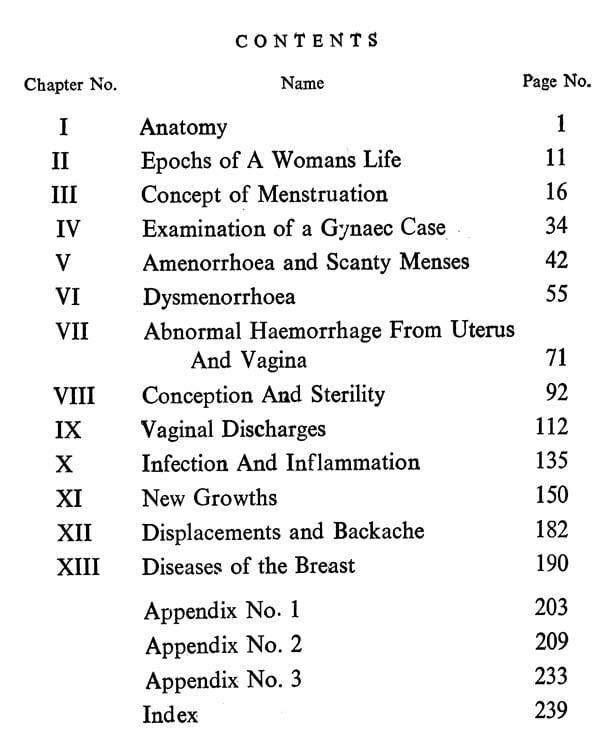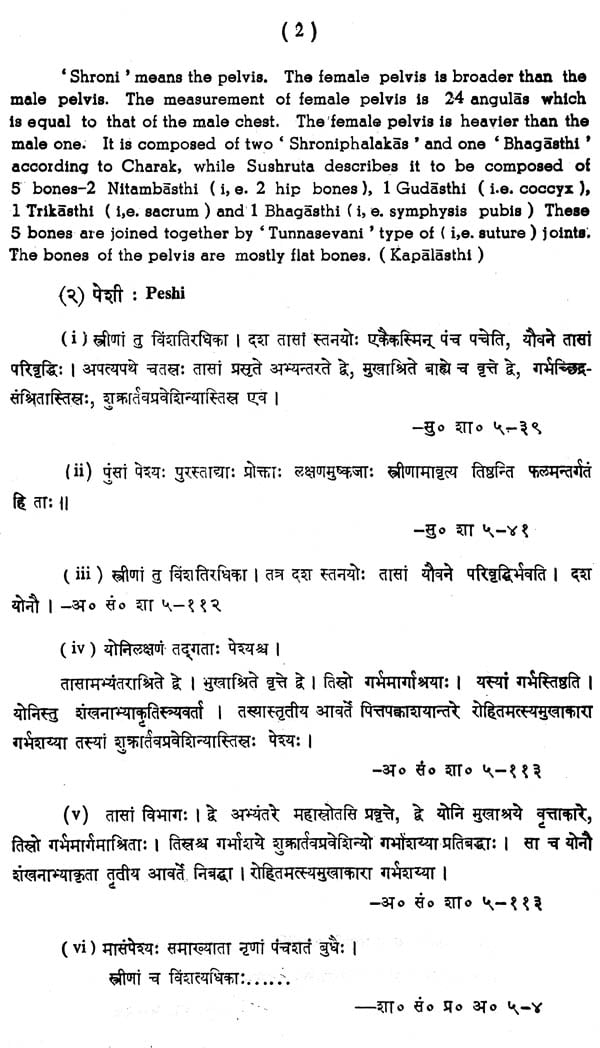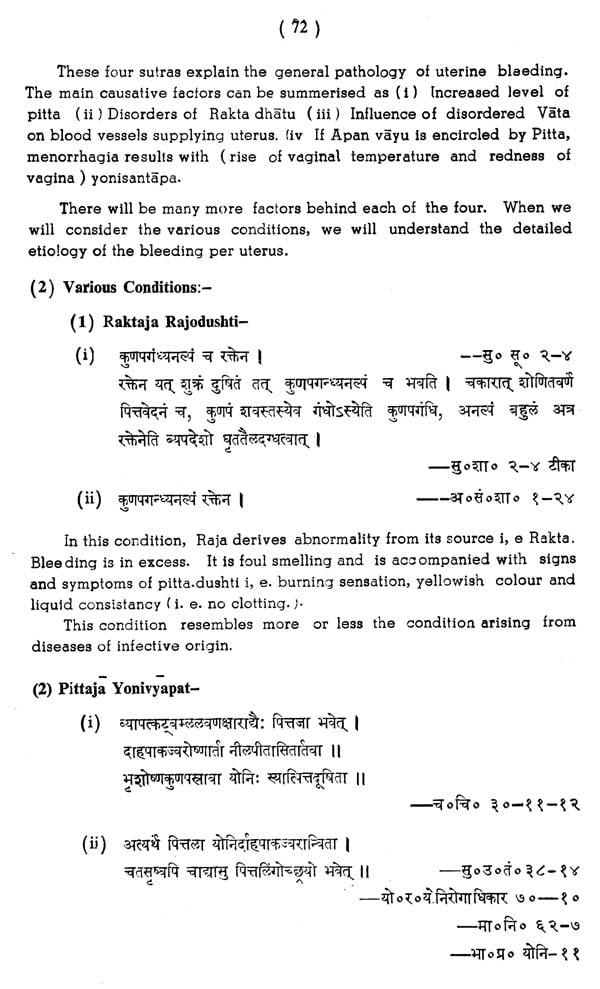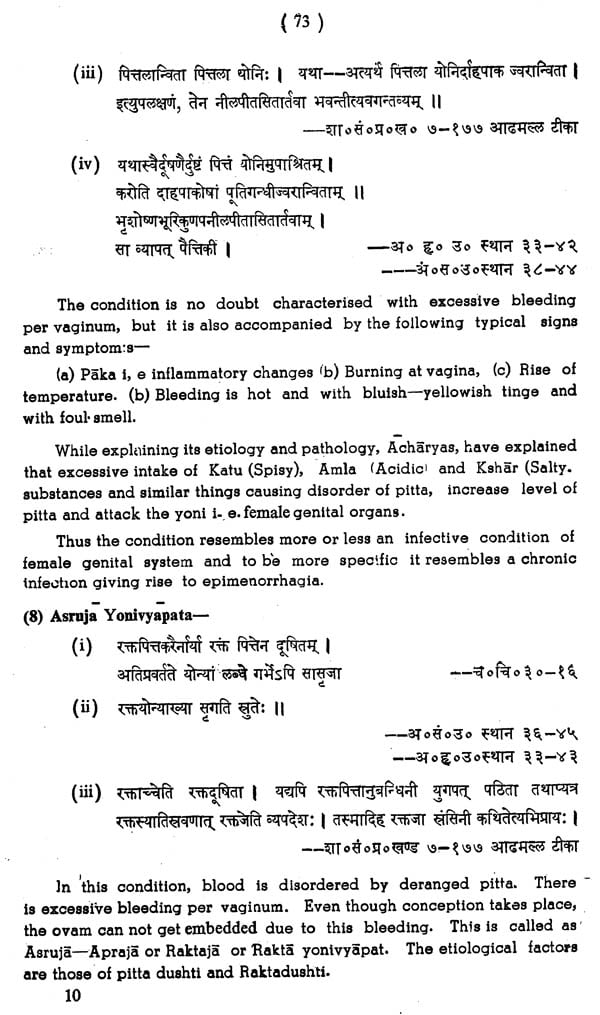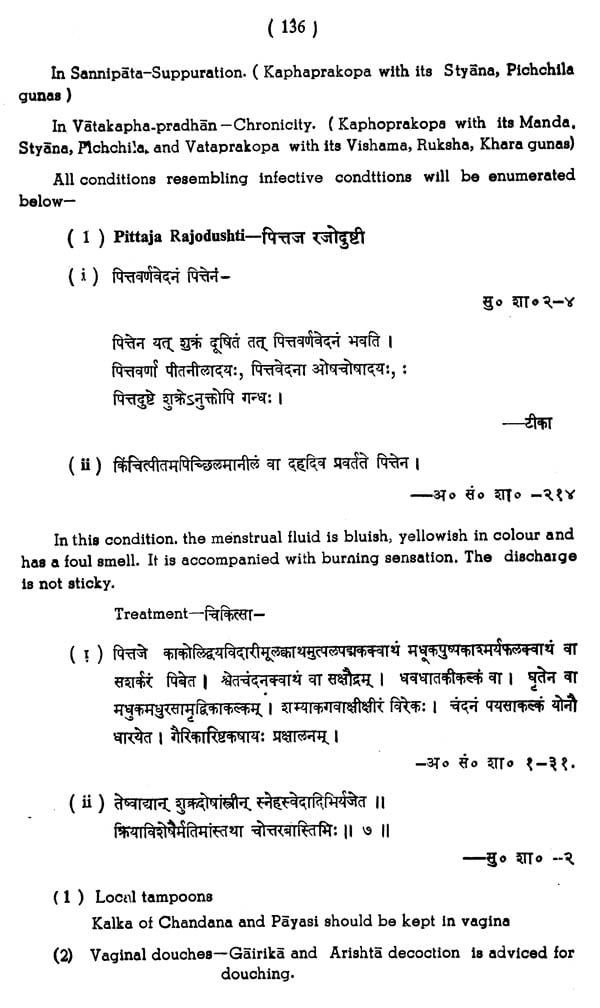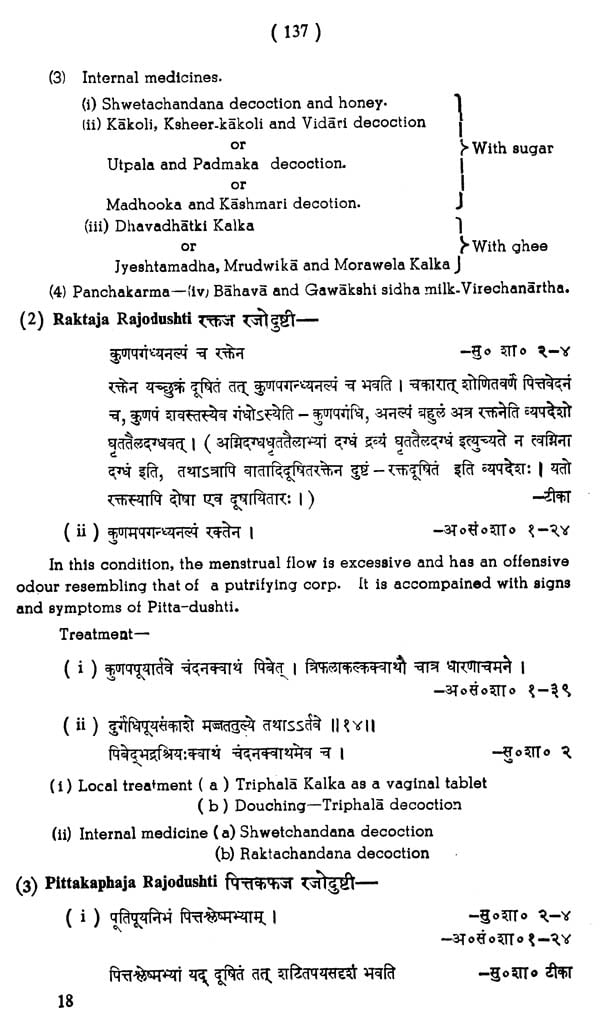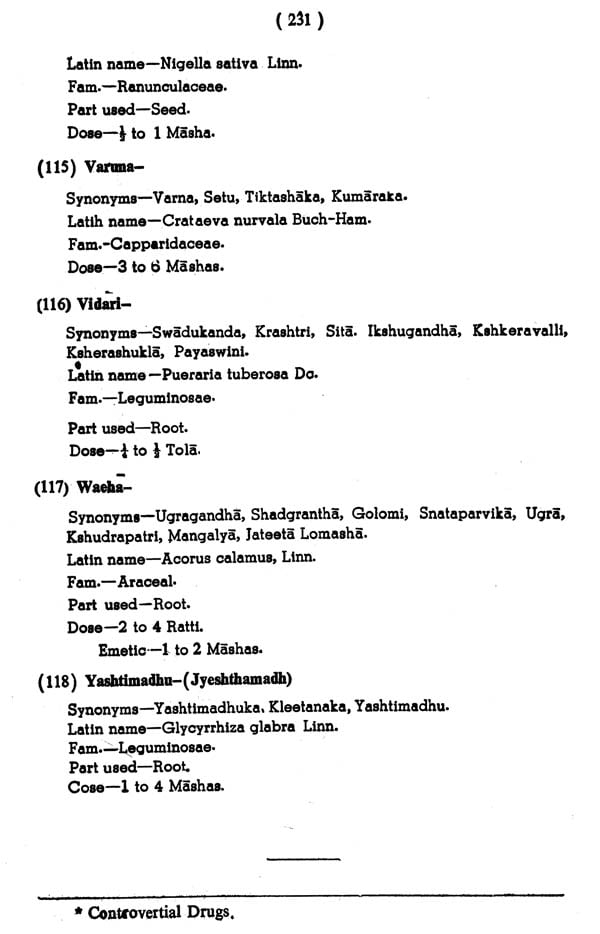
Ayurvedic Concepts in Gynaecology
Book Specification
| Item Code: | NAV420 |
| Author: | Nirmala G. Joshi |
| Publisher: | Chaukhamba Sanskrit Pratishthan |
| Language: | Sanskrit and English |
| Edition: | 2018 |
| ISBN: | 9788170841488 |
| Pages: | 262 (11 B/W Illustrations) |
| Cover: | PAPERBACK |
| Other Details | 9.00 X 6.00 inch |
| Weight | 380 gm |
Book Description
This book is the first treatise which deals with the Ayurvedic concepts in the field of gynaecology in a comprehensive & clear way. As a stronch believer in integration of medical sciences based on Ayurvedic principles, Dr. Miss Nirmala Ganesh Joshi has taken great care to co-relate the Ayurvedic concepts with the modern medical views without neglecting the original character of Ayurvedic literature. After thorough scrutiny of ancient Ayurvedic Samhitas, the relavant material from Sanskrit texts is re-arranged with a scientific and systematic outlook. The chapters and presentation have a close resemblance to that of modern text books in gynaecology e.g. epochs of woman life, new growths, infection and inflammation etc. In keeping with the sequella, the author has reached the nearest possible interpretation of the modern science in the Ayurvedic language. It helps the modern medical person also to understand the Ayurvedic aspect of gynaecology. The basis of various gynaecological conditions is analyzed and simplified. The concept of menstruation has been discussed on the basis of Tridosa theory and a very neat diagrammatic presentation of the same is the unique feature. The chapters like examination of a gynaec case, conception and sterility prove the necessity of applying the knowledge of Ayurvedic fundamentals to the specialized branches. The last two appendix provide with very useful and handy information regarding the therapeutic aspect to the students as well as research workers. The firm conviction and lucid style with which the whole subject is dealt with attracts any medical student interested in gynaecology. The book with ample diagrams and tables is of great help to the post-graduate students, teachers and research workers as an important source book in the specialized branch of gynaecology.
Born on 1st October 1936, Dr. Miss Nirmala Ganesh Joshi, graduated from Poona University securing the B.A.M.S. degree with top-ranking in Nidana Cikitsa and Kaumarabhritya Tantra, in the year 1960. In 1964, she joined Post Graduate Institute of Indian Medicine, B.H.U. as Reader and Head of the Dept. of Prasuti Tantra. Dr. Joshi has delivered lectures for ordinary women to educate them regarding health care with Ayurvedic remedies in different women organizations as well as in television programmes on health. At different conferences, seminars, work-shops as a guest lecturer or resource person, she has enlighted the scholars regarding Ayurvedic aspect of family planning, sex counseling, women health care etc. Her extension lectures in teaching institutions and universities used to be a source of inspiration to research workers and teachers as the subject in always dealt with fundamental approach. Dr. Joshi as a devotee of Adi Sankara has been interested in Vedanta philosophy. This aspect is going to reflect in her efforts to co-relate prakriti concept of Ayruveda with Varna or class system on the basis of Pancikarana theory. She has also delivered a number of lectures on Manusmriti in relation to woman life.
Every graduate of integrated medicine is always asked a question- "Is there anything in Ayurveda as regards Gynecology? A short and simple answer that I Spontaneously give is –"Yes, a lot!" But the answer neither satisfies myself nor the person who asks the question for obvious reasons. A modern medical person likes to know the approach of ancient authors regarding the gynecological concepts In terms of modem science. No doubt, ancient authorities also dealt: his subject of gynaecology and obstetrics to a great extent, however their method of approach to this subject is totally different as compared to the modern approach. For a correlation, it would be necessary to orient the material of gynaecology from old texts in a systematic manner with proper grouping and explainations, adopting more or less the standard method of presentation, as is found in modern text books of Gynaecology. Considering this very fact, I have made an humble effort to present the subject of Gynaecology.
Initially, I was faced with the problem of collection of the vast scattered material on the subject, in a systematic way from various Samhitas. While including this in the book, I have avoided the repeatation and quoted the Sutra of orginal authority only, at the same time mentioning the cross references In other Samhitas. This would naturally help the scholar to study the subject and appreciate its evolution. It would also help in understanding the background of various Samhitas. If a Sutra is given in the same form by Sushruta, Vagabhata, Yogaratnakara, Bhavamishra, Madhava and others, I have quoted the Sutra of Sushruta and mentioned the references of other authors.
As present work is mainly focused on giving the concept of the disease in a concised form as is mentioned in texts, I have avoided mentioning the English translation of all the Sutras incorporated in the book. The inclusion of all the Sutras would have added only repeatation of the fact, giving a scope for some confusion in the mind of readers. To avoid this, I have given a summarised explanation of the whole collection, maintaining the continuity of the subject under consideration. This method leaves a scope for some interested scholars on this subject, to dive into the treasures of the original work to seek more jewels in the light of approach mentioned in this book.
While dealing with a specialised subject, it is presumed that the reader is well-versed in the fundamentals of medical science and repeatation of basic facts is avoided. This method was prevalant in Ayurvedic text books also. When one surveys the subject of Stree-roga, one finds that the subject is dealt with assumption that the student is acquainted with the basic concepts of Tridosha sidhanta, for his understanding of patho- physiology of the disease and Rasa-guns-veerya-vipaka-sidhanta for understanding the principle on which the treatment by medicines has been suggested. I have made an attempt to analyse the Patho- physiological concept in terms of Tridosha, expanding the subject for a better understanding of a student and physician alike. The expansion has been done taking necessary help of the basic knowledge from Nidana-Chikitsa etc. At certain places, the explainations may appear to be hypothetical one, e. g. Role of Doshas in relation with menstrual cycle, Etiology of dysmenorrheal, Pathology of inflammation etc. In fact, these explanations are nothing but the application of basic principles of Ayurveda to the special subject of Stree-roga (i.e. Gynaecology).
There can be no two opinions on the ideal methodology of research In Ayurveda. Most of the leading authorities believe and stress on the fact that more stress should be laid on the Fundamental Research than on merely assesing the effect of any single drug. The science of Ayurveda will only be enriched if more attention to this fact is given by various research workers who would then only do a proper justification to Ayurveda. With this view in mind, I have made an attempt to simplify and analyse the basis of various gynaecological conditions, and I am confident, that this would be of a great help to a student desirous to undertake research in the branch, to understand and proceed in his clinical or experimental approach.
My role in presenting this work is an outcome of many discussions held with the authorities on this subject. Most of them, have been my teachers (at my parent insitution, Tilak Ayurved Mahavidyalaya, Poona) and my colleagues (at the Post Graduate institute, Banaras Hindu University) who have obliged me from time to time by explaining me the interpretations of various topics and solving my difficulties.
